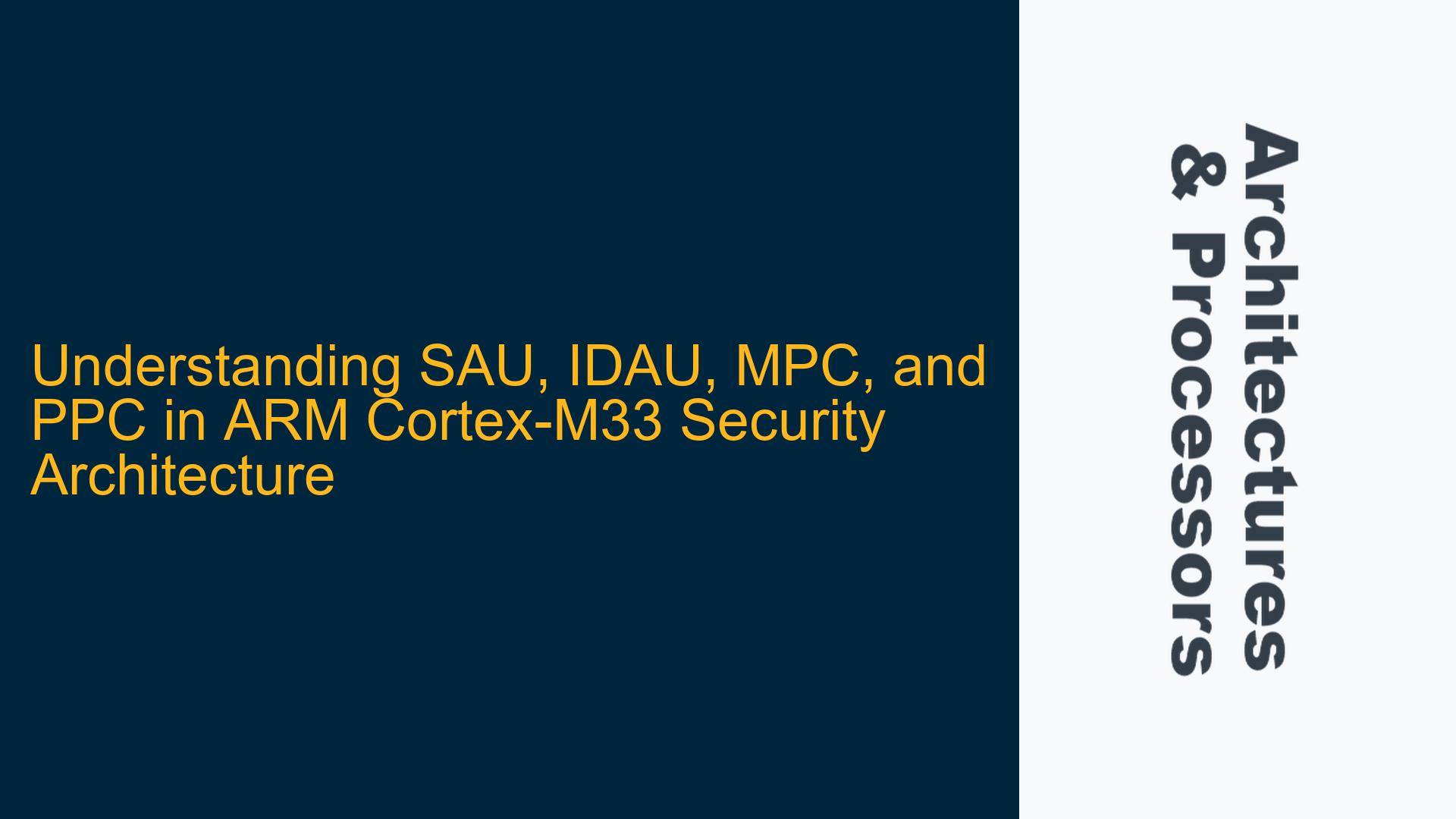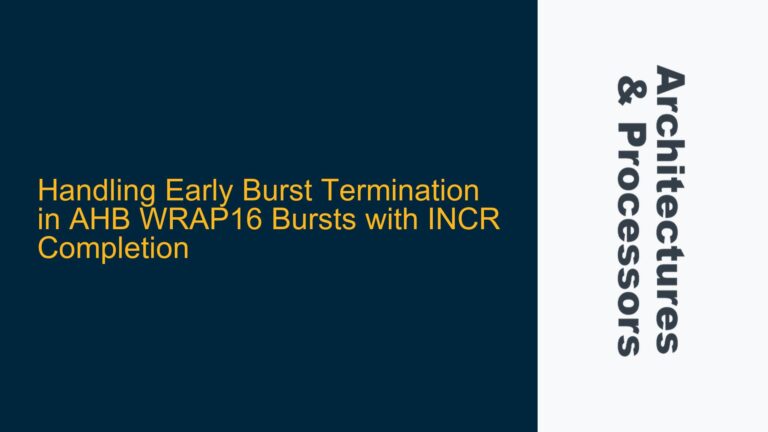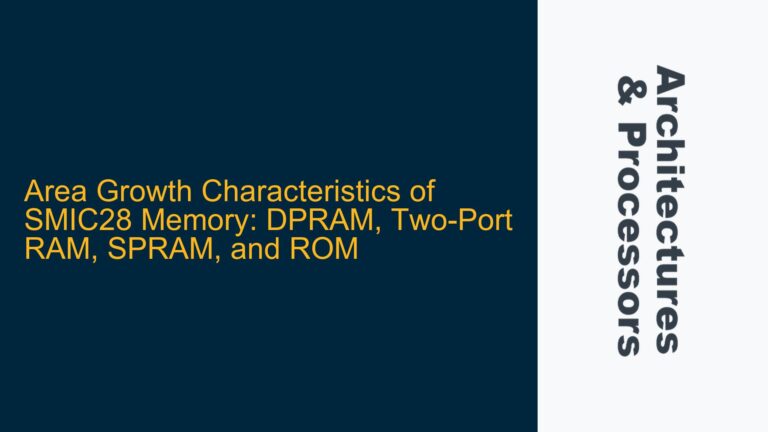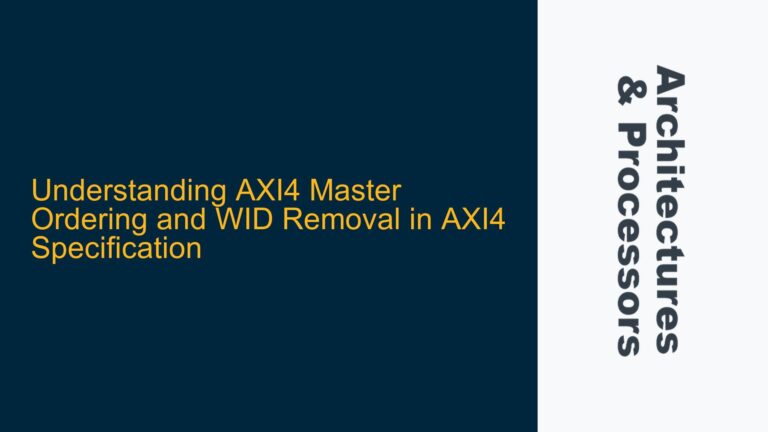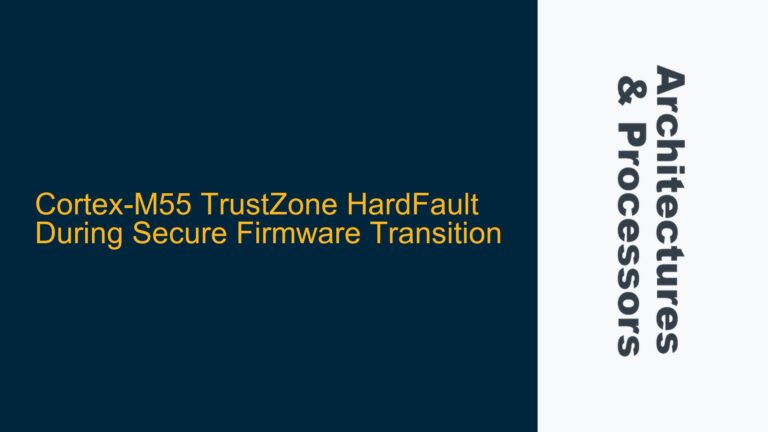ARM Cortex-M33 Security Attribution and Memory Protection Mechanisms
The ARM Cortex-M33 processor, part of the ARMv8-M architecture, introduces advanced security features to enable robust isolation between secure and non-secure states. These features are critical for modern embedded systems that require protection against software-based attacks and unauthorized access to sensitive data. The Security Attribution Unit (SAU), Implementation Defined Attribution Unit (IDAU), Memory Protection Controller (MPC), and Peripheral Protection Controller (PPC) are key components in this security framework. Understanding their roles, interactions, and differences is essential for designing secure systems.
The SAU and IDAU work together to define the security attributes of memory regions, while the MPC and PPC enforce access control by managing secure and non-secure address aliases. Misconfigurations or misunderstandings of these components can lead to security vulnerabilities, performance bottlenecks, or system failures. This guide provides a detailed analysis of these mechanisms, their potential issues, and practical solutions for troubleshooting and optimization.
SAU and IDAU: Defining Secure and Non-Secure Memory Regions
The Security Attribution Unit (SAU) and Implementation Defined Attribution Unit (IDAU) are responsible for partitioning the memory map into secure and non-secure regions. The SAU is a programmable hardware unit integrated into the Cortex-M33 core, allowing software to define up to eight memory regions as secure or non-secure. Each region is configured with a base address, size, and security attribute (secure or non-secure). The SAU is typically used for fine-grained control over memory regions that require dynamic security attribution.
The IDAU, on the other hand, is a hardware-defined unit that provides a fixed memory partitioning scheme. It supports up to 256 regions, making it suitable for systems with complex memory maps or a large number of peripherals. The IDAU’s security attributes are defined during chip design and cannot be modified by software. The SAU and IDAU work in tandem, with the SAU’s programmable regions taking precedence over the IDAU’s fixed regions unless the IDAU marks a region as exempt from SAU checks.
A common issue arises when the SAU and IDAU configurations conflict, leading to unexpected security attributes for certain memory regions. For example, if the IDAU defines a region as secure and the SAU attempts to mark it as non-secure, the secure attribute from the IDAU will prevail. This behavior can cause confusion during system design, especially when debugging access violations or security faults.
To avoid such issues, developers must carefully review the memory map and ensure that the SAU and IDAU configurations align with the system’s security requirements. Tools like ARM’s TrustZone® technology can help visualize the memory partitioning and identify conflicts between the SAU and IDAU.
MPC and PPC: Enforcing Access Control Through Address Aliasing
The Memory Protection Controller (MPC) and Peripheral Protection Controller (PPC) are hardware components that enforce access control by managing secure and non-secure address aliases. Unlike the SAU and IDAU, which define security attributes, the MPC and PPC control the accessibility of memory and peripherals by mapping them to different address ranges based on their security state.
The MPC is used for memory protection, allowing developers to partition embedded flash or SRAM into secure and non-secure regions. It achieves this by creating secure and non-secure aliases for each memory page. For example, a memory page located at address 0x0000_0000 might have a secure alias at 0x1000_0000 and a non-secure alias at 0x2000_0000. The MPC ensures that only the appropriate alias is accessible based on the processor’s security state.
The PPC performs a similar function for peripherals, enabling secure and non-secure access to peripherals through different address ranges. This is particularly useful for systems with a large number of peripherals, as it allows developers to restrict access to sensitive peripherals while providing unrestricted access to non-sensitive ones.
A common issue with the MPC and PPC is incorrect address alias configuration, which can lead to access violations or unintended security breaches. For example, if a memory page is mapped to the wrong alias, non-secure software might gain access to secure data, or secure software might be unable to access its own data. Additionally, the MPC and PPC can introduce performance overhead due to address translation and access checks, especially in systems with a large number of memory regions or peripherals.
To mitigate these issues, developers should carefully configure the MPC and PPC during system initialization and verify the address aliases using debug tools. ARM’s CoreSight™ technology can be used to monitor access patterns and identify misconfigurations.
Troubleshooting SAU, IDAU, MPC, and PPC Configuration Issues
When working with the SAU, IDAU, MPC, and PPC, developers may encounter a range of issues, from security faults to performance bottlenecks. The following steps provide a systematic approach to troubleshooting and resolving these issues:
-
Review the Memory Map and Security Requirements: Start by reviewing the system’s memory map and security requirements. Identify which memory regions and peripherals need to be secure and which can be non-secure. Ensure that the SAU and IDAU configurations align with these requirements.
-
Check for Conflicts Between SAU and IDAU: Use ARM’s TrustZone® tools to visualize the memory partitioning and identify conflicts between the SAU and IDAU. Resolve any conflicts by adjusting the SAU configuration or modifying the system’s security requirements.
-
Verify MPC and PPC Address Aliases: Carefully configure the MPC and PPC during system initialization and verify the address aliases using debug tools. Ensure that each memory page and peripheral is mapped to the correct secure or non-secure alias.
-
Monitor Access Patterns: Use ARM’s CoreSight™ technology to monitor access patterns and identify misconfigurations or performance bottlenecks. Look for unexpected access violations or excessive address translation overhead.
-
Test Security Features: Thoroughly test the system’s security features to ensure that they function as intended. Use a combination of software tests and hardware debugging tools to verify that secure data is protected and non-secure software cannot access secure resources.
-
Optimize Performance: If the MPC or PPC introduces performance overhead, consider optimizing the system’s memory and peripheral access patterns. For example, group secure memory regions together to minimize address translation overhead or reduce the number of peripherals that require secure access.
By following these steps, developers can effectively troubleshoot and resolve issues related to the SAU, IDAU, MPC, and PPC, ensuring a secure and efficient system implementation.
In conclusion, the SAU, IDAU, MPC, and PPC are critical components of the ARM Cortex-M33 security architecture. Understanding their roles, interactions, and potential issues is essential for designing secure and efficient embedded systems. By carefully configuring these components and using the appropriate tools, developers can avoid common pitfalls and ensure that their systems meet the highest standards of security and performance.
